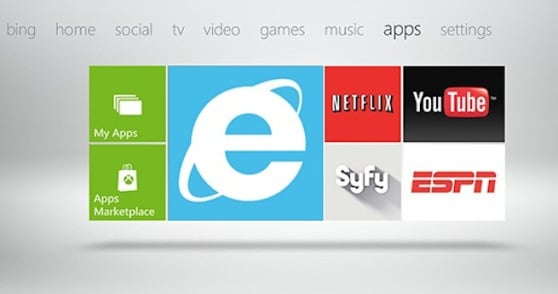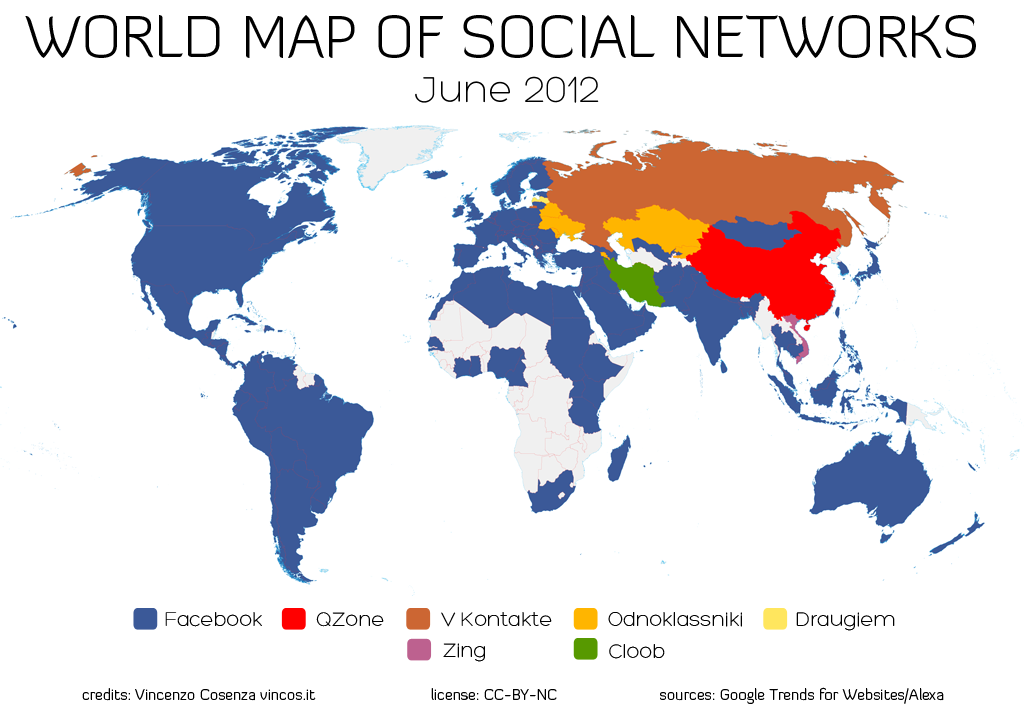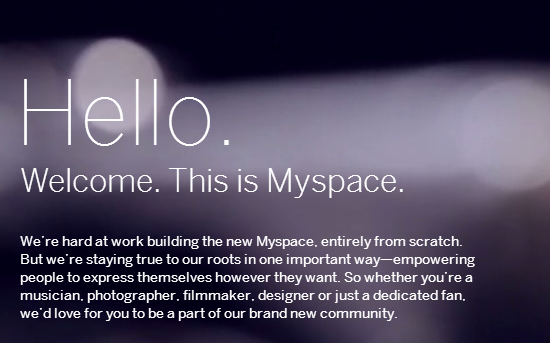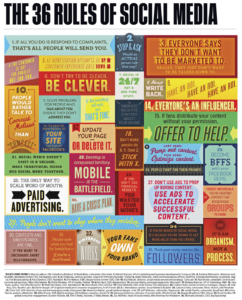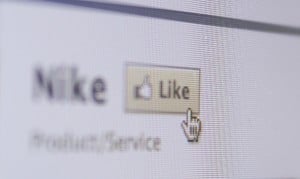The company is now encouraging users to visit their favoured social networks through Internet Explorer 9, which was included in the update bundle.
Writers have questioned why there ever was a need for either of the apps due to controller inconveniences (unless you owned an Xbox keyboard) and other sources have claimed that the apps were hardly being used anyway as they lacked key features such as status updating.
However, Microsoft hasn’t actually published usage statistics of either app, so sources claiming both were underused are merely speculating.
Personally, I don’t feel there would have been any harm in leaving these social apps in place as a convenience for existing players; they would have kept the user interacting on the Xbox platform, rather than forcing them to check their PCs, or worse, their iPhone’s and Macs.
What’s clear though is that Microsoft are trying to push IE9 in any way shape or form and with the imminent release of Windows 8, this move does make sense in terms of global strategy.
To begin, I want to quickly introduce you to the power of local social networks which are often overlooked due to the popularity of Facebook and Twitter. The Netherlands, a country I’ve lived in most of my life, boasts a prime example of a social network that many outside the country may not have heard of: Hyves.
Hyves (as in bee hive), launched in September of 2004, and quickly grew to become the number one social network in the Netherlands – proving more popular than the likes of MySpace and Friendster at the time. With Facebook’s dominance spreading globally, the social network giant only surpassed Hyves in users within the Netherlands mid June 2011.
Yet despite its drop, Hyves still boasts healthy membership and activity, with 9.8million users (that’s nearly 60% of the population) based in the Netherlands. It also excels in traffic, coming in as the most searched Dutch internet website in 2011. The question many ask is why didn’t it share the same fate of other social networks?
Hyves adapted well to Facebook’s popularity by focusing on areas other than networking e.g.news, weather, polls and has become a daily social hub for users. Rather than letting its core demographic( most probably Generation Y users) dwindle, it has been able to attract new members both young and old.
The image below displays the most popular social networks across the globe per country. What’s clear overall is that while Facebook is the dominant force, the significance and value of localised social networks should not be underestimated.
Whether this will be enough to recharge interest in the social network remains to be seen. Following News International’s acquisition and subsequent fire sale, Myspace has laid dormant compared to its biggest competitor, Facebook.
However, if the timing proves right and the offering is considerably revamped, the network might have a chance at bringing users back.

Austrian daredevil Felix Baumgartner made history on Sunday, October 14th 2012. His 24-mile plunge down to the Earth’s surface, from the highest point of the stratosphere, broke the record for highest altitude for a parachute jump.
For all we know, his historic skydive, sponsored by Red Bull, may also have broken many records for social media activity around a single event. The major social networks contributed enormously to raising interest in the feat, with millions of people (including myself!) expressing their excitement in their Facebook status, sharing links, or tweeting about it. Many celebrities got in on the action by posting tweets about the event as well. Over 7 million people watched the jump through the live feed on Youtube, and a tweeting frenzy occurred during the 4 minutes and 19 seconds of the fall. Just after Baumgartner had landed, alive and kicking, a photo of him on his knees was shared over 29,000 times on Facebook, sealing his status as a bona fide real-life hero. The progression of this extraordinary event shows how these social networks interact so strongly.
Evidently, phenomena like this show that a single event can turn a person into an overnight star, admired by millions the whole world over. Whilst stunts like Baumgartner’s would have caught the attention mostly of media outlets or people who could watch them from up close, had it happened only a few years ago, it seems that today, if you are about to perform a spectacular, never-before-seen feat, you will have the whole world watching. No pressure.
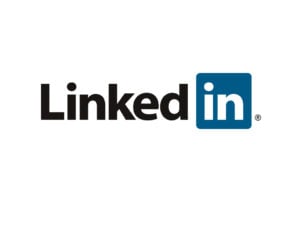
LinkedIn is moving one step further into business-to-business and business-to-consumer marketing with a new design for company pages and featured updates. The site made its new company page design available to select firms nearly a month ago and is now making the features available for free to more than 2 million companies that have LinkedIn profiles.
“We know that company pages are at the heart of the LinkedIn follower ecosystem. It’s through these pages that companies reach and truly connect with their target audiences,” Marc Bishop, director of global product marketing, noted announcing the site-wide roll out. “It’s our goal to provide an environment where brands have the proper tools and platform to cultivate meaningful relationships with our members.”
LinkedIn’s new featured update functionality gives brands the ability to more prominently display the updates they want to highlight above the fold in their update feed. The free feature enables firms to promote news and updates for up to 48 hours.
Philips, one of the first companies that got early access to the redesigned company page, experienced a 106 % increase in engagement after it tested targeted status updates over a six-week period. The company targeted audiences in health care, engineering, and creative design, depending on the content of each update.

This week, a man was sentenced to 12 weeks of prison, after having posted comments on Facebook which were deemed offensive. Mathew Woods, 20, from Chorley, Lancashire, had allegedly referred to the missing girls April Jones and Madeleine McCann.
This is only of many cases of indictments resulting from inappropriate behaviour which became public in social networks, in recent months. Last December, a woman famously spent Christmas behind bars after a video of her making racist slurs on a tram in Croydon, Surrey, circulated on Youtube.
However, many of these indictments have been contested by members of the legal community, with arguments that the sentences are disproportionate, or that such legal actions violate our freedom of speech. Keir Starmer, the director of public prosecutions, has stated that it is time for “an informed debate about the boundaries of free speech in an age of social media”.
Such a debate could drag on for a while: what are the limits to what we can publicly say, even in one sentence, and if we are punished for saying something offensive, how should the judges decide how severe the sentence should be?
Until these questions are resolved, one must remember that posting electronic messages which are “grossly offensive or of an indecent, obscene or menacing character” on social media sites, IS an offence, according to section 127 of the Communications Act 2003. Therefore, always think before adding a comment to a feed or updating your status. You could be one sentence away from community service!
It’s an inspiring ad and shows how social media marketing falls cleanly into the online marketing mix.
You might want to print a giant copy of this, and stick it on a wall somewhere…
Mobile apps for customers are now able to offer location based shop alerts, rewards and discounts, promote customer service, increase sense of intimacy and omnipresence, whilst encouraging loyalty and sales. Meanwhile online fashion pioneer ASOS’s Twitter and Facebook ‘Here to Help’ accounts encourage users to take customer service issues to these accounts, and away from the brands social media shop windows.
Pinterest may not at present have the tools to drive customer engagement that Facebook may have, but its visual orientation caters to fashion content perfectly. Tumblr is also a potentially ideal platform for fashion brands to blog. Topshop encourages fans to submit photos of themselves, and even has an in-house photographer who requests permission to capture their image for the site.
Do these other social mediums have the potential to drive significant loyalty? Or merely fuel fans desire to be ‘spotted’ to attract more customers? Designer labels including Alexander McQueen’s MCQ, use Tumblr to post campaign pictures, stream videos and offer a glimpse behind the scenes of the brand, giving customers exclusive content and a feeling of being involved, which is an incredibly effective tool to drive loyalty.
In the near future your average consumer will have many more options to browse and shop, in-store and online leaving them very much in the driver’s seat. It is worth bearing in mind too, that with such stiff competition now taking place, between brands in this social media frenzy, it is likely many will be left lagging behind the high-street giants, such as Marks and Spencer’s and TopShop in the incentives driven tug of war for consumer loyalty.

